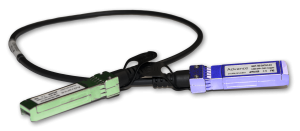I have previously discussed the SFP multi source agreement and detailed my opinions on why it doesn’t necessarily achieve its goal of enabling true inter-vendor compatibility and support. With the limitations of the SFP MSA understood, and facing the reality that one size doesn’t fit all, we often find customers in a familiar predicament – difficulties in connecting devices from mixed sources within the same rack.
The IEEE standards have guided technology down a relatively straight track, ensuring protocols are followed by all vendors manufacturing network equipment for standard deployments. I’ll gloss over some of the non-standardised features some vendors utilise for now, such as stacking methodologies, as this is not necessarily a bar to mixed vendor environments. What it does mean though, is that customers are able to mix and match technology from multiple sources and reasonably expect the network to function. Like Cisco switches but prefer Juniper firewalls? No problem. Maybe you have an Arista core and Extreme edge environment? That works. A case seen more commonly than expected, a network manager needs to add some port density but has a limited budget, so patches in a low cost switch such as a Netgear, to his big HP core in his comms room. It poses no issue to the operation of the network.
Of course when I say there is no issue, it all works, I am speaking purely from the perspective of the network operation – passing data, dealing with VLANs, SNMP and more are all based on standardised protocols that work across different brands. The issue of vendor incompatibility comes when you try and connect those devices to each other. In a rack, space is often at a premium so direct attach cables (DAC) present the perfect solution for device interconnects. They are tidy, cost effective and readily available. They are especially useful when connecting multiple 10G connections to a single 40G port with the use of breakout cables. The issue is these cables use a built in connector – SFP+, QSFP+, QSFP28 etc which is still subject to vendor coded EEPROM checks by the host devices.

Why is this an issue? Well it all comes back to my discussion on the SFP MSA. As an example, Cisco make a DAC that is coded to work in a Cisco switch – both connectors on the cable are coded the same. Likewise a Juniper DAC will support Juniper switches, both ends. So who’s DAC do you use to connect a Cisco to a Juniper device? Both ways will fail as the opposite vendor’s device will flag the incompatibility and shut down the switch port. And let’s be honest, Cisco are not going to sell you a modified DAC that will enable you to go buy someone else’s kit, and likewise neither would Juniper. I use these two vendors as an example, but the same applies to all vendors that code their modules, HP, Arista, Extreme, Dell, the list goes on.
Of course you can rely on Advance to fulfil the requirement that the vendors can’t! Thanks to our ongoing investment into product design and development, and our unique position to be able to rapidly prototype and test product concepts in our UK facility, Advance has the proven ability to manufacture DAC cables to support multi-vendor environments. Produced on demand in the UK to meet each of our customer’s unique requirements and with extremely short leadtimes, often next day. Multi-vendor DACs come with the same great advantages as all our other attach products including our renowned lifetime warranty.
For more information on Advance products and to discuss your particular requirements, drop us a line on 01942 718493 or contact us here.
